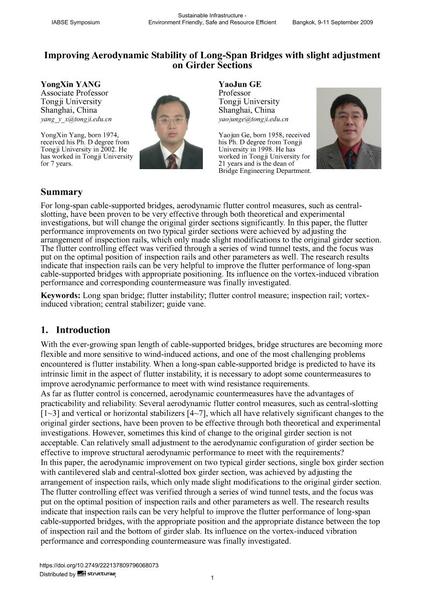Improving Aerodynamic Stability of Long-Span Bridges with slight adjustment on Girder Sections

|
|
|||||||||||
Bibliografische Angaben
| Autor(en): |
Yongxin Yang
Yaojun Ge |
||||
|---|---|---|---|---|---|
| Medium: | Tagungsbeitrag | ||||
| Sprache(n): | Englisch | ||||
| Tagung: | IABSE Symposium: Sustainable Infrastructure - Environment Friendly, Safe and Resource Efficient, Bangkok, Thailand, 9-11 September 2009 | ||||
| Veröffentlicht in: | IABSE Symposium Bangkok 2009 | ||||
|
|||||
| Seite(n): | 42-51 | ||||
| Anzahl der Seiten (im PDF): | 8 | ||||
| Jahr: | 2009 | ||||
| DOI: | 10.2749/222137809796068073 | ||||
| Abstrakt: |
For long-span cable-supported bridges, aerodynamic flutter control measures, such as central- slotting, have been proven to be very effective through both theoretical and experimental investigations, but will change the original girder sections significantly. In this paper, the flutter performance improvements on two typical girder sections were achieved by adjusting the arrangement of inspection rails, which only made slight modifications to the original girder section. The flutter controlling effect was verified through a series of wind tunnel tests, and the focus was put on the optimal position of inspection rails and other parameters as well. The research results indicate that inspection rails can be very helpful to improve the flutter performance of long-span cable-supported bridges with appropriate positioning. Its influence on the vortex-induced vibration performance and corresponding countermeasure was finally investigated. |
||||
